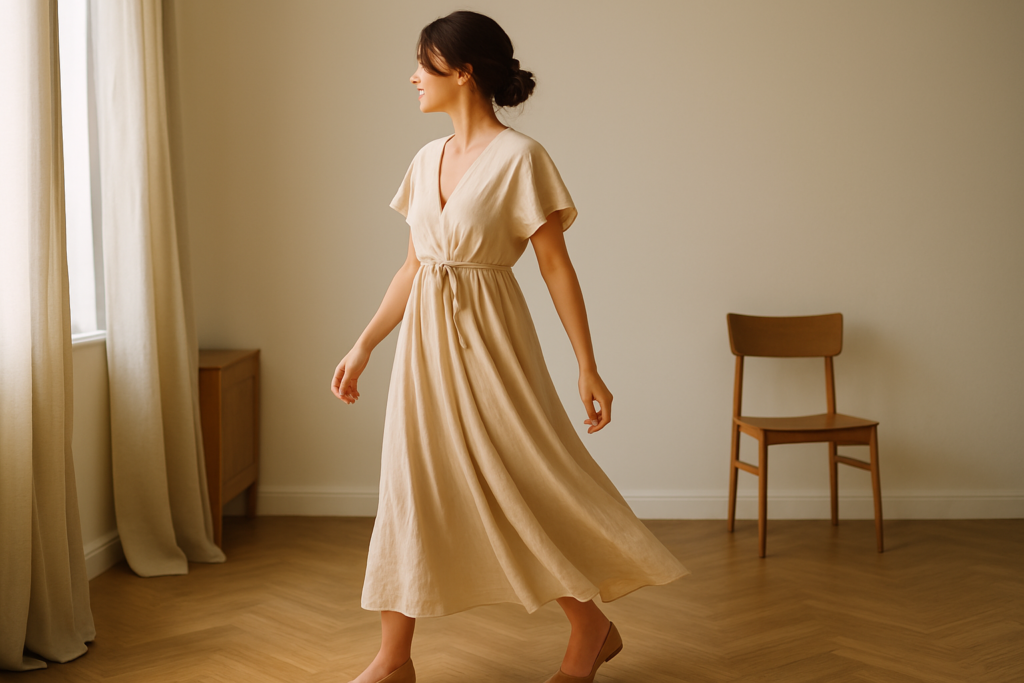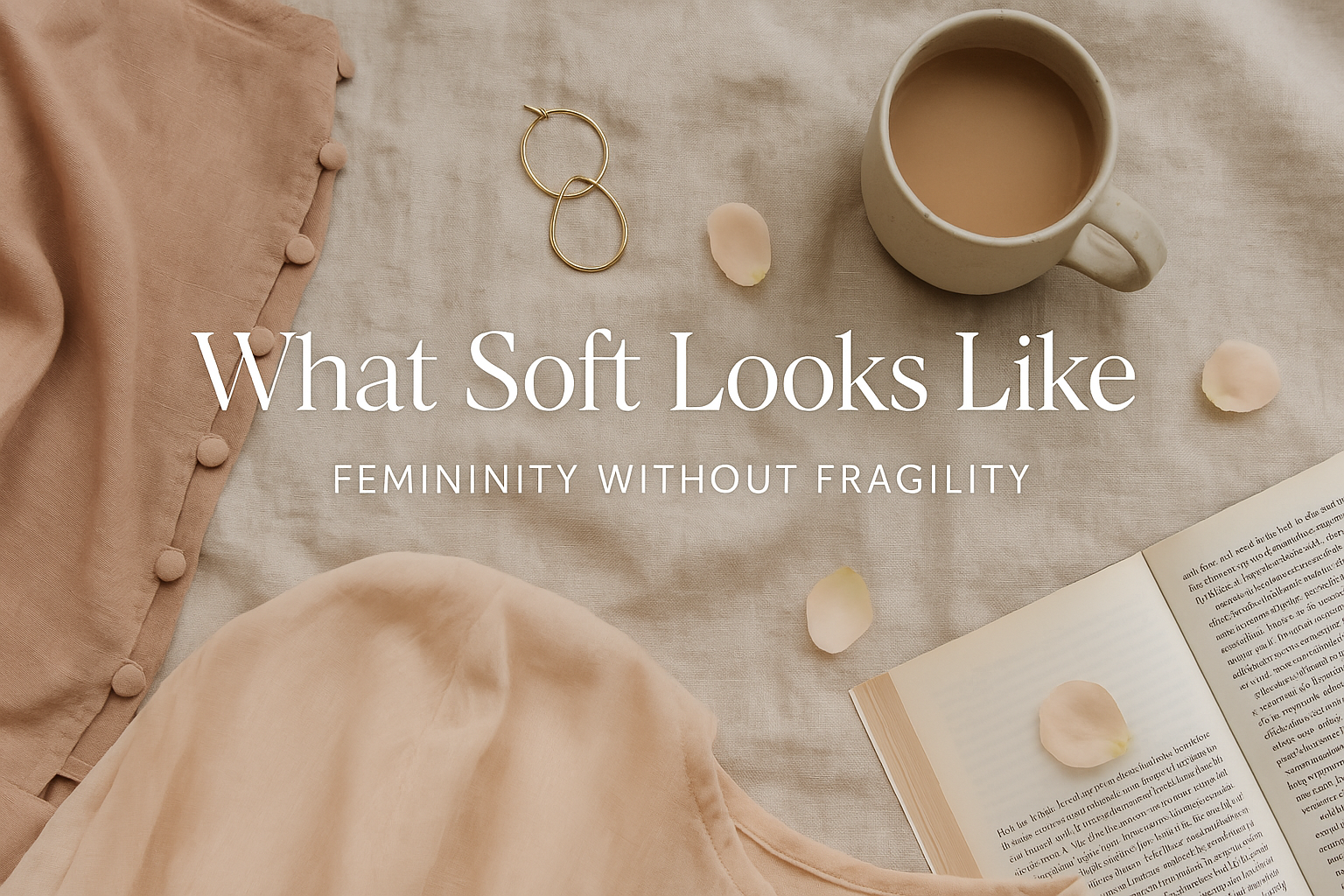Introduction
In contemporary discourse, the narrative surrounding strength is predominantly characterized by sharp lines and bold statements. This portrayal often associates power with rigid structures and assertive postures, promoting the idea that strength is synonymous with aggression or dominance. However, this dominant perspective overlooks a vital aspect of human experience: the potential for strength to manifest through softness and subtlety. Embracing a different viewpoint, we can recognize that femininity, when viewed through the lens of stability and grace, represents a powerful, gentle force.
Softness, in this context, does not denote weakness or fragility. Rather, it embodies a form of resilience that allows for fluidity, adaptability, and connection. In various aspects of life—be it in leadership, personal relationships, or self-perception—choosing ease and presence over mere performance can lead to a profound sense of strength. This gentle strength encourages authenticity and vulnerability, thus fostering deeper connections and understanding. As society progresses towards a more holistic understanding of what it means to be strong, we must challenge the conventional notions that often exclude softer expressions of power.
The exploration of femininity without fragility invites us to consider how these qualities can coexist harmoniously. By prioritizing grace alongside strength, individuals can access a reservoir of emotional intelligence and empathy that often goes untapped. This approach not only fosters personal growth but also cultivates a more inclusive narrative where diverse expressions of strength are acknowledged and valued. As we delve deeper into this discourse, the themes of balance and duality will emerge as we examine how softness can coexist with determination, ultimately enriching our understanding of strength and femininity.

What ‘Soft’ Really Means
The concept of ‘soft’ transcends mere aesthetics; it embodies a multifaceted interpretation that encompasses comfort, movement, and personal expression. When discussing softness in fashion, it is essential to consider not only the physical attributes of garments but also the emotional resonance they evoke. Flowing cuts and silhouettes play an integral role in this interpretation. These designs flow gracefully with the body’s natural movements, creating an aura of ease and fluidity that allows the wearer to express themselves authentically.
The choice of fabrics further amplifies the expression of softness. Breathable materials like linen and cotton provide both comfort and style. These fabrics allow for air circulation and ease of movement, which not only enhances the overall experience of wearing such garments but also promotes a sense of well-being. Wearing clothing made from natural fibers can instill confidence, setting the foundation for a soft yet powerful presence, rather than one defined by fragility.
In addition to cut and fabric, the emotional aspects of a soft color palette contribute significantly to this theme. Shades such as cream, sage, blush, and stone evoke warmth and serenity, encouraging a gentle yet confident persona. This chromatic choice fosters an environment where individuals can feel at home in their attire, allowing for self-expression without the constraints of conventional norms. The deliberate selection of these soft hues aligns not only with a personal aesthetic but also reinforces the idea that softness is an integral part of one’s identity rather than a limitation.
Ultimately, softness in fashion should be redefined as a celebration of comfort and individuality. Clothing should support the wearer, enabling a balance between elegance and self-acceptance. Thus, embracing softness can lead to a heightened sense of empowerment, allowing individuals to navigate the complexities of life while staying true to themselves.
Feminine but Not Fragile
The essence of femininity often resides in the delicate balance between strength and softness. By exploring the distinction between dressing to attract external validation and dressing to foster inner comfort and confidence, we can redefine feminine attire in a way that transcends traditional notions of fragility. This approach promotes a sense of empowerment that aligns more closely with genuine self-expression.
Garments that embody this philosophy include long skirts that facilitate mobility, allowing the wearer to move freely while projecting elegance. These skirts create a fluid silhouette that enhances femininity without compromising strength. Pairing such skirts with lightweight layers can amplify comfort while providing a sophisticated appearance. Fabrics such as breathable cotton or soft linen ensure the wearer feels at ease, promoting a casual yet refined essence that is increasingly sought after.
Additionally, substantial soft knits offer an ideal blend of style and comfort. These pieces can convey warmth and approachability while still suggesting a quiet strength. Subtle details like pleats, ties, and varying textures can enhance visual interest without overwhelming the viewer. This nuanced approach to fashion emphasizes an appreciation for craftsmanship and thoughtful design, rather than relying on glittering embellishments or rigid structures that may draw excessive attention.
It is essential to recognize that true femininity is not synonymous with fragility. Rather, it encompasses an inner strength that can be grounding and empowering. By favoring understated elegance over ostentatious display, women can cultivate a personal style that resonates deeply with their identity. Ultimately, this reflects a cohesive understanding that femininity can exist robustly, characterized by thoughtful choices that bolster confidence and express genuine individuality. In conclusion, redefining the paradigm surrounding feminine fashion illustrates the profound connection between strength and style, offering a refreshing perspective on what it means to dress as a woman today.

How to Dress in Soft Strength
Building a wardrobe that embodies the concept of soft strength involves thoughtful selections that prioritize both comfort and elegance. When curating your clothing collection, begin by choosing pieces that move harmoniously with your body. This fluidity allows for effortless movement, promoting a sense of freedom and ease, which is essential in achieving the desired soft yet strong aesthetic. Look for garments made from natural materials such as cotton, linen, or merino wool. These fabrics not only feel good against the skin but also offer durability and breathability, enabling you to wear them confidently throughout the day.
An effective strategy for achieving this balance is to mix flowing pieces with more structured items. For example, pairing a soft blouse with tailored trousers can create a visually appealing contrast while maintaining an air of sophistication. This combination allows you to express femininity without compromising on strength. Additionally, layering can add depth to an outfit, so consider incorporating lightweight cardigans or blazers that maintain a soft silhouette while providing that structured element.
Color palettes play a crucial role in enhancing your personal presence. Opt for hues that complement your skin tone and reflect your personality, making sure they do not overwhelm your overall look. Soft pastels, muted tones, and earthy shades can emphasize a gentle demeanor while still feeling assertive. Make it a priority to focus on how clothing makes you feel rather than adhering strictly to societal expectations surrounding formality. Emphasizing personal comfort allows for a more authentic representation of oneself, fostering confidence in your soft strength. Remember, dressing in a manner that reflects your inner self ultimately leads to a more powerful presence.

Conclusion
In the exploration of femininity devoid of fragility, it is essential to understand that true strength does not necessitate the imposition of societal expectations or traditional armor. Embracing softness is not a sign of vulnerability; rather, it is a celebration of inherent strength and authenticity. This journey encourages individuals to reassess their beliefs around what it means to be both soft and strong, redefining the narrative that has long been perpetuated in popular culture.
By choosing to adopt a perspective that embraces nurturing qualities, individuals can find empowerment in their softness. It allows for a deeper connection to one’s emotions, fostering a sense of resilience that starkly contrasts the rigidity often associated with strength. Recognizing that gentleness can coexist with assertiveness is pivotal in cultivating a holistic approach to personal identity. When you trust your softness, you open yourself to a wealth of insights and authentic experiences, all of which contribute to a richer, more fulfilling life.
Moreover, the act of embracing one’s softness signifies courage and self-awareness, qualities that are immensely powerful. It encourages individuals to break free from the constraints imposed by societal norms, creating space for self-expression that is genuine and grounded. In doing so, personal truths emerge, serving as a strong foundation upon which to build one’s identity. Therefore, it is crucial to celebrate these attributes rather than shy away from them. Each person’s journey is unique; understanding and valuing the strength found in softness can be transformative. Remember that your authenticity is your most potent asset, and it is through this lens that true power resides.







